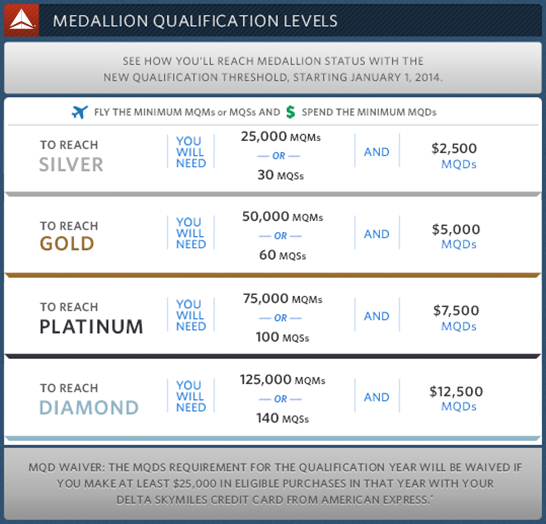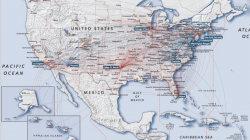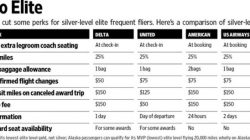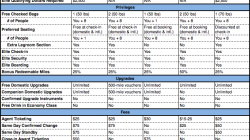I generally don’t have nice things to say about Delta’s Sky Miles frequent flyer program. But Delta has also been making many changes lately that earn them a second look. So, as I did for United’s Premier Platinum tier (75,000 miles) and Alaska’s MVP Gold tier (40,000 miles), today I’ll make the case for pursing status with Delta Air Lines.
Delta generally comes across as a very well run airline. I hear mostly good things about customer service, they seem to offer good elite recognition and treatment, and they have some clever business practices. Why hedge fuel with prices with contracts when you can just buy an oil refinery? Why invest in expensive new aircraft when you can refurbish old ones (some savings go to pay for the higher fuel burn)? There are plenty of small aircraft that last 30 or 40 years. And the Crossover Rewards program with SPG is fairly creative. United’s “me too” partnership with Marriott is little more than an offer of free hotel status.
Thus it was not a big surprise when Delta began moving aggressively into the Seattle market. This is what I would expect from a company that, like Alaska, does things a little different. I think they recognize the growth potential up here, both for domestic traffic and as a jumping off point to Asia. In fact, while American and United battle it out with lie flat seats between SFO/LAX and JFK — routes Delta competes on, as well — only Delta offers a similar premium product from Seattle to JFK.
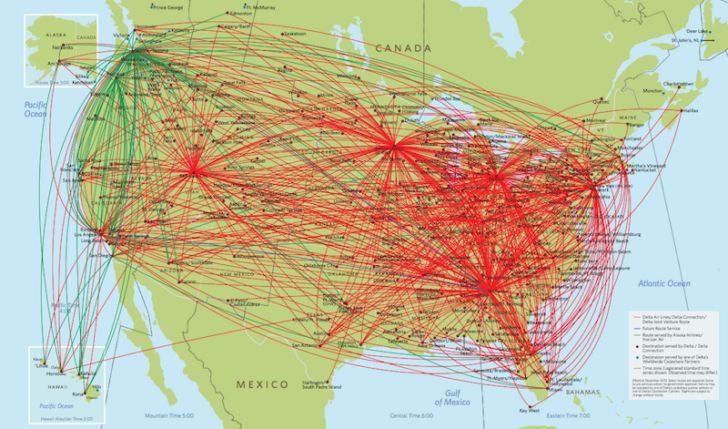
I talk about this stuff because I think Delta is a very good airline for frequent flyers even if they aren’t a good airline for frequent flyer programs. You give up some of your benefits in exchange for a well-run airline, and I would not mind flying with them if I had a company to foot the bill and book me into higher fares. When I discussed United, I mentioned that one reason why I was willing to tolerate poor customer service was a very generous frequent flyer program. I would love an airline that does both well, but one or the other is generally sufficient to attract and retain customers.
SkyPesos … ahem, SkyMiles … are one of the least valuable domestic frequent flyer currencies. This is not to say they are always of low value, but using them wisely takes some skill and patience. I shouldn’t have to book some random return trip in order to get a good one-way award price. And while a three-tier award chart isn’t bad in itself, the upper and middle tiers seem to have the most common availability.
If you’re going to fly Delta, most of the value will come from the elite benefits and the customer service — not the miles. (They did, after all, devalue the award chart twice in the last year, most recently with no notice.)
Delta’s 25,000-mile and 50,000-mile tiers don’t get you many benefits that are unique from competitors’ programs. Like with United and American, you can replicate many of the same perks with a co-branded credit card. Instead, I will focus on the Platinum (75,000 miles) and Diamond (125,000 miles) tiers. Delta was the first to a four-tier elite program, and while United followed it and American probably will, too, it stands out by significantly raising the bar for the top tier. No other loyalty program requires 125,000 miles to reach the upper echelon. Is it worth it?
Both receive a generous baggage allowance, preferred seating in economy class, and complimentary upgrades for themselves and a companion. These are similar to what Gold members get without all the extra miles. They get a free drink in economy class, which American offers its 100,000-mile fliers and Alaska offers its 40,000-mile fliers.
Platinum and Gold members both get 100% bonus miles, but Diamond is a step higher with a 125% bonus. It’s a small boost that doesn’t impress me much. What is impressive is the complimentary SkyClub membership for Diamond members. I don’t know of any other U.S. airline that offers lounge access on wholly domestic flights as an elite benefit. But still, I suppose you could always just apply for an American Express Platinum Card and save yourself the trouble of mileage running your way to the top. You’ll still have access to SkyClubs on same-day Delta tickets even after American Airlines ends its partnership with Amex.
Some of you are wondering when I’m going to get around to Medallion Qualifying Dollars. Delta was first out the gate with this spend-for-status requirement, followed by United. But I haven’t complained about it nearly as much as I have about United’s Premier Qualifying Dollars because Delta offers a credit card spend waiver for all elite tiers while United excludes its top tier from this option. It is an unfortunate trend but not a serious concern.
If you’d asked me a few weeks ago which SkyMiles elite tier to go for, I probably would have recommended Platinum — the same verdict I gave for United and for the same reasons: a reasonably good shot at complimentary upgrades, a good mileage bonus, and some fee waivers for same-day changes and award tickets. Delta did offer systemwide upgrades, but they were almost worthless.
Amol discussed the changes to these upgrades quite well. Unlike the old version, they will be applicable to almost all fares except the most deeply discounted E fares. This seems a fair compromise and still better than United’s W-fare requirement that can cost 50% or more above typical advance-purchase K/L fares. I don’t expect every airline to be as generous as American is with completely unrestricted upgrades. The catch is that Platinum members will only receive Regional upgrades, while Diamond members will have the option to select Global upgrades. If you do a fair amount of international travel, then making the effort for Diamond status could be worthwhile.
Delta also improved the upgrade process to Hawaii, making routes from the West Coast eligible for complimentary upgrades. This is consistent with programs like United (whose flights from Houston and the East Coast require a regional upgrade instrument).
What we have here is an airline with a good route network, good service, and efforts to improve the value of its loyalty program. The miles are still not much to get excited about, but I think either Diamond or Platinum status is a worthy goal. It depends a lot on your travel patterns: whether you fly international or domestic and if you have a boss already willing to buy business class fares for you. It also depends on whether you can fly 125,000 miles in a year, which would impress even me.


